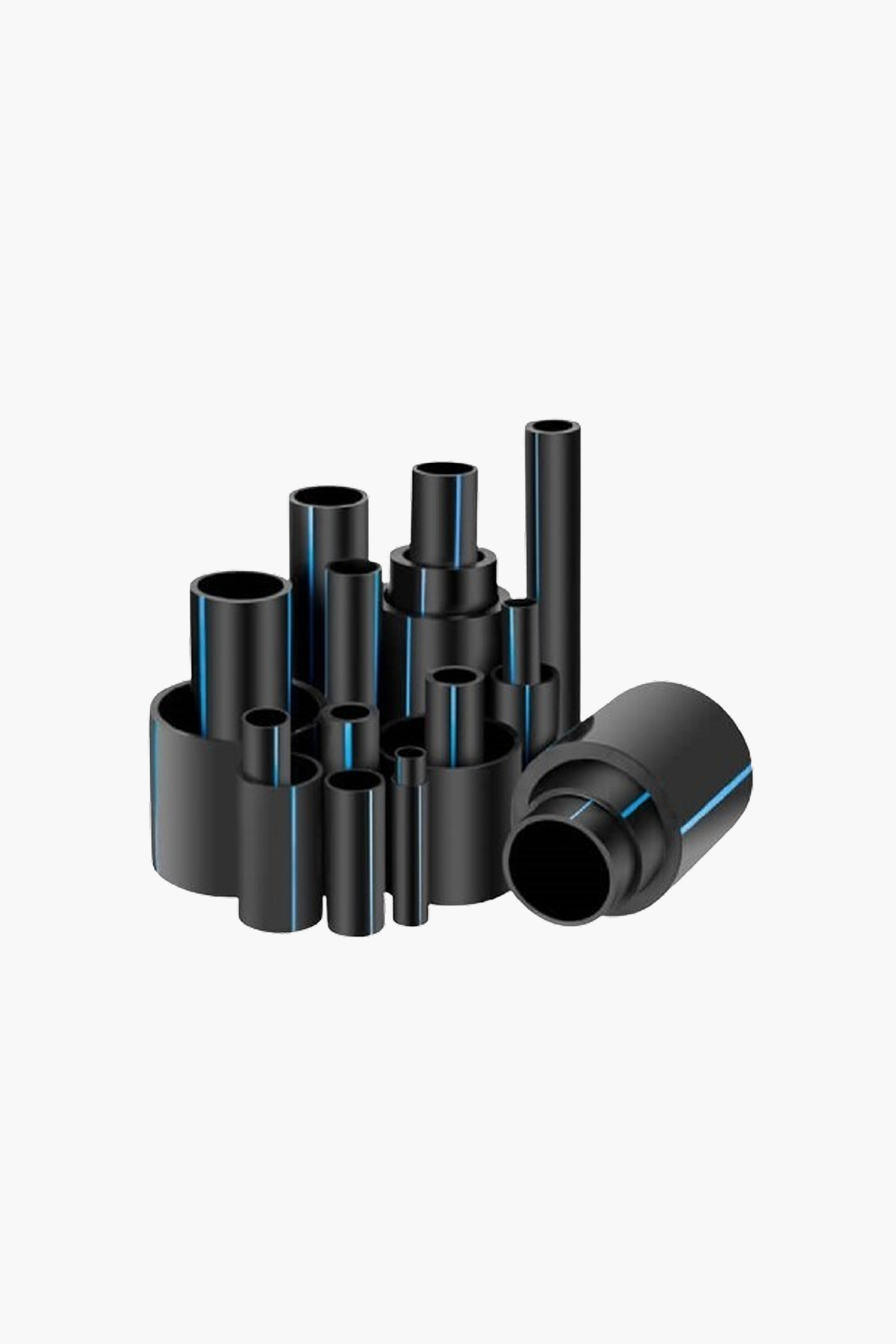Diameter(Q)=200 mm
Wall Thickness (S)=18.2 mm
General Features of HDPE Polyethylene Pipes
The diameters of HDPE pipes, namely high-density polyethylene pipes, range between 20mm and 800mm, and their pressure classes are between pn 4 (4 bar) and pn 32 (32 bar).
“HDPE” is a term originated from “High Density Poly Ethylene” in English, and its Turkish translation is “yüksek yoğunluklu polietilen” (high-density polyethylene). HDPE is obtained by subjecting petroleum derivatives to various operations.
HDPE pipes can be used for transporting drinking water. The HDPE pipe system has successfully passed many tests regarding especially the transportation of drinking water since 1950. As a result of these tests, the usage of HDPE pipes has been approved since it has been determined that they do not harm human health at all. HDPE pipe systems, which are among the most widely used pipes today, stand out with their economic structure, ease of transportation, high performance, easy jointing method, and ease of use.
Pe100 pipes are pipes that are produced with pe100 raw material, which is a new generation of high-density polyethylene raw materials. These products stand out with their increased fluid carrying capacity, especially under high-pressure conditions.
The prices of HDPE polyethylene pipes are also quite affordable, and the minimum lifetime of an HDPE pipe is 50 years.
HDPE pipes have successfully been affected by the technological developments that have been experienced for the last 60 years and have become one of the most preferred pipes of today. HDPE Pipes; Preserve the general features of fluids that pass through them. Since moss does not adhere to their inner surfaces, they can easily be used in drinking water systems. They provide high resistance against chemicals due to their chemical features. They are very easy to store and shape in sloping areas since they are flexible in terms of softening and shaping. Owing to their high elasticity properties, their usage is much more comfortable in regions where there are lots of seismic movements. They can orient themselves according to the direction of movement during ground movements and do not break. The welding and assembly methods of HDPE pipes are very easy. They can be transported easily since they are lightweight, and their transportation costs are affordable.
HDPE Polyethylene Pipe and Accessory Assembly Methods
Polyethylene pipes and accessories are combined by melting them together or through mechanical parts. Various accessories, flanges, or transition adapters designed according to the purpose can be used to connect pipes remaining inside or outside of polyethylene.
Known assembling methods for PE materials are;
- Electrofusion (EF)
- Butt-fusion (Butt Welding)
- Socket Welding
- Flange Connection
HDPE Polyethylene Pipe Usage Areas
- In clean water (drinking water) pipelines
- In pressurized water pipelines
- In natural gas pipelines
- In drinking water treatment facilities
- In solid material transportation
- In solid waste transportation
- In chemical substance transportation
- In water cooling pipelines
- In sea outfalls
- In connection lines between the main network line and the secondary networks.





















